A shark whose weird head shape resembles its name! How amazing, right? More importantly, hammerhead sharks have electroreceptors which are basically sensory organs. You name a prey; they catch it with their powerful 6th sense.
Even their other hunting abilities and their physical abilities linked to their eating habits resemble how capable they are.
Starting from their physical features, how many species, and eating habits, I will cover everything for you. That will give you more insights about how hammerhead sharks are, their characteristics, features, conservation status, etc. Stay tuned!
What Are the Physical Features of Hammerhead Sharks?
What makes hammerhead sharks so cunning and unique is their physical features! Beginning with their head, hammerhead sharks’ heads are shaped the way they are for a reason that pertains to their hunting style.
Their large heads are equipped with several sensory organs that aid in the pursuit, observation, and capture of prey.
Moving on, about their eyes, do you know they enjoy 360-degree vision? As their eyes are set wide, it enables them to enjoy a wide field view.
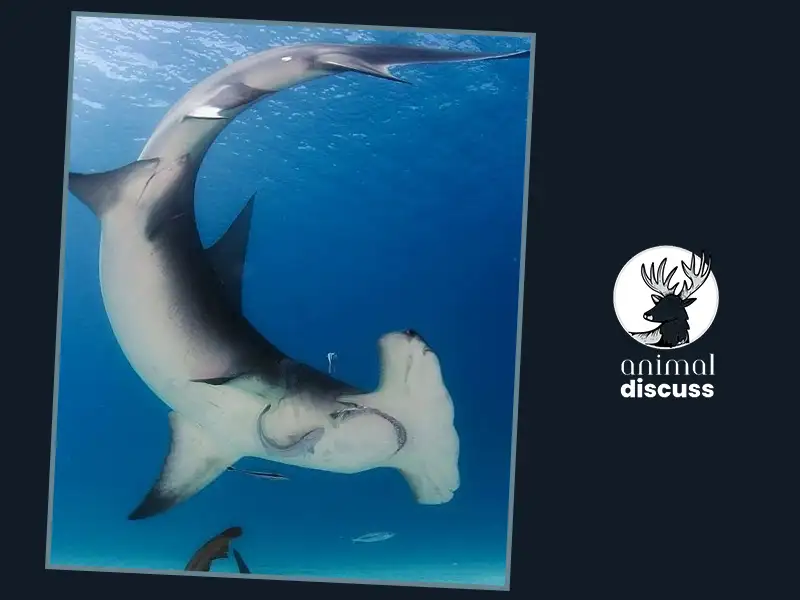
Other than that, some sharks like the Scalloped ones have eyes placed a bit forward. As a result, they could enjoy binocular vision.
Moreover, as they have an increased number of electroreceptors and ampullae of Lorenzini, they are more prone to electroreception. Even in unclear water like muddy water, they are able to detect their prey.
Likewise, the hammerhead shark has a smooth and sleek body. Their torpedo-shaped body makes sure that they can easily glide and swim.
It has two dorsal fins, one anal fin, and a caudal fin. The tail fin is big and powerful, and it helps the shark to glide easily in the water.
You can have a look at the below table to pick some pin-point details on them.
| Features | Some facts |
|---|---|
| Scientific name | Sphyrnidae |
| Communication | Through electric signals and body signs |
| Size | 1. Female: 15 to 18 feet 2. Male: 12 feet |
| Weight | 400-500 pounds |
| Viviparous | Keeps fertilized eggs in the body and gives birth to around 2-42 pups |
| Average lifespan | 20-30 years |
| Color | Tops and bottoms that range from grayish brown to olive-green |
| Diet | Carnivores |
| Habitat | Lives in coastal and continental shelf marine environments with mild tropical climates |
| Mating | Polygyny |
| Swimming speed | 20 mph |
| IUCN red list | Critically endangered |
How Many Species of Hammerhead Shark Are There?
You’ll be surprised to know that this hammerhead shark has nine species.
| S.NO | Name of species | Features |
|---|---|---|
| 01 | Great hammerhead | The largest one in the group which can grow up to 6 meters. You can find them swimming alone in the tropical waters. |
| 02 | Smooth hammerhead | As the name is smooth, it reflects the fact that in the center of their hammerhead, there is no hollowness. After Hammerhead, it is known as the second-largest one. |
| 03 | Scalloped hammerheads | Grow around three meters in length. You can find them where the temperatures are a bit warm. |
| 04 | Winghead shark | The winghead ones are comparatively smaller and are detected as two meters in length in general. And they solely depend on eating fishbones. |
| 05 | Bonnethead shark | You can either call it bonnethead or the shovelhead due to its head shape being somewhat different. Even their head shape is distinct in males and females too. |
| 06 | Scalloped Bonnethead | One of the rare ones and called the crown shark. The female one is noticed to grow one meter in length and the male one a bit less than that. |
| 07 | Scoophead hammerhead shark | Fishermen caught Scoophead most of the time. Researchers yet to explore more about this one. |
| 08 | Smalleye hammerhead | One of the ways to identify it is their eye color which has a vivid gold shade on it. For this, many people know it as the golden sharks. As they have different colors, it helps them to dissolve and catch prey easily. |
| 09 | Carolina hammerhead | It looks quite similar to a scalloped one. |
Where Do Hammerhead Sharks Live?
The hammerhead shark is a global species. Their natural habitats include warm and cool waters close to shorelines and continental shelves. They are commonly found in the Atlantic Ocean.
This ocean plays host to both warm and cold-water masses. And this separates the Caribbean and Florida from the Atlantic and the Mediterranean Sea, respectively.
Similarly, they are seen in the Indian Ocean, which runs parallel to the beaches of Southeast Asia, India, and Africa.
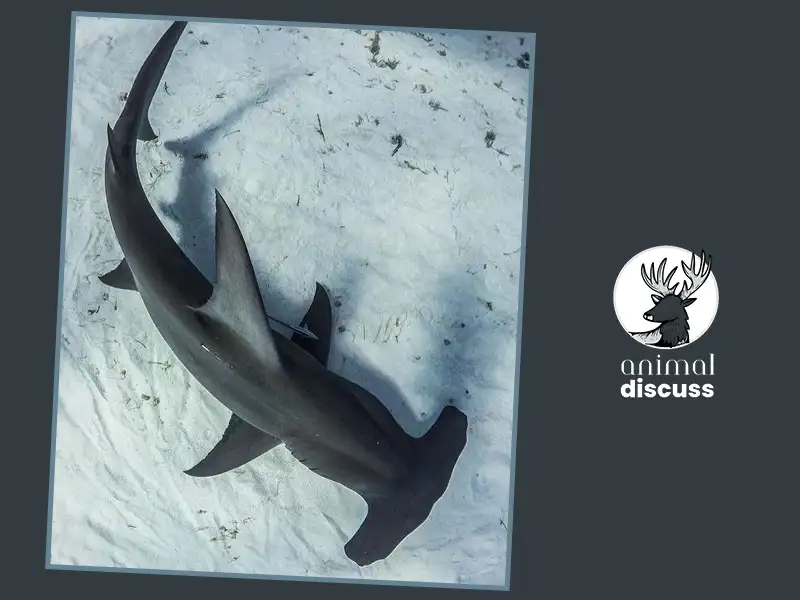
Also, they are seen in the Pacific Ocean. And this varies in temperature from the tropical seas off the coasts of Australia and Indonesia to the temperate water off the coasts of Japan and California.
For example, in search of food, great hammerheads will swim closer to shore, although they prefer deeper water farther out at sea.
However, the scalloped hammerhead is a social fish that inhabits both shallow coastal areas and deeper waters. Likewise, the smooth hammerhead is a fish species that inhabits deeper waters close to the margins and underlays of landmasses.
Lastly, the Bonnethead often inhabits the shallow waterways of rivers, bays, and the seashore.
If you want to know more details about hammerhead sharks habitat, you can check my article
What Do the Hammerhead Sharks Eat?
As you have seen in the profile above, hammerhead sharks are carnivores whose food habits include eating diverse fishes such as krill, crustaceans, etc. However, they even consume sea turtles, crabs, lobsters, etc. too. But this varies among the nine species of hammerhead shark.
Apart from this diverse diet, you will be surprised to know that this hammerhead shark sometimes depends on plants as well for their nutrition. That signifies their versatility when it comes to choosing food.
However, if you want to know more details about what these hammerhead sharks love to eat, you can check my article “Learn About the Dietary Habits of The Giant Hammerhead Shark”.
How Does a Hammerhead Shark Behave?
Well, hammerhead sharks are mostly seen hunting around alone. But if needed, they sometimes roam around in groups too. Mostly, the groups are noticed in the day, not in the light.
As hammerhead sharks are cannibalistic, they are also known for traveling mile after mile just in search of food.
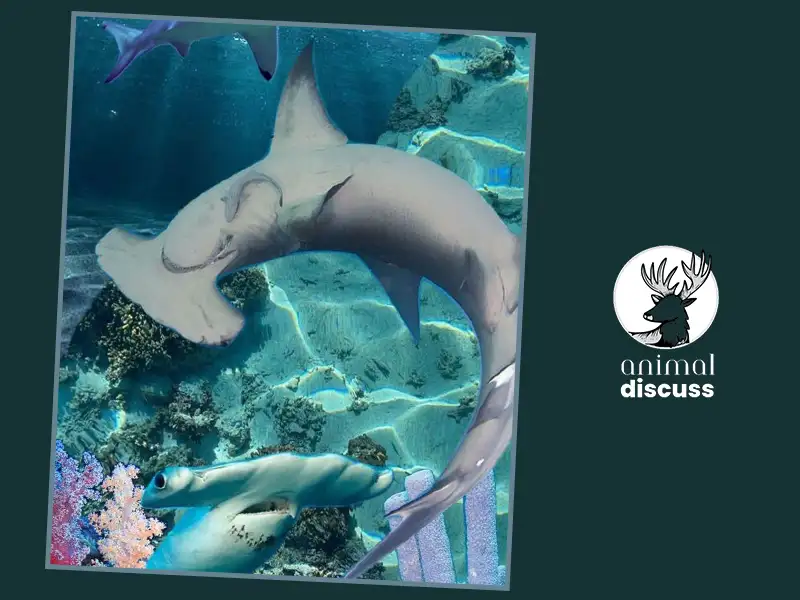
In October, they arrive in Bimini and the Bahamas, where they remain until April. They visit Jupiter, Florida, between October and March. The 3,000-kilometer journey between Northern Virginia and Bimini or Jupiter was traveled by hammerhead sharks, and it was recorded with satellite receivers.
One astonishing thing about them is that the hammerhead sharks are able to camouflage themselves. This is a great tactic for them to remain hidden and catch their target.
Mostly, they avoid humans, as they love to remain alone and shy. Also, they do not cause any harm to humans until you’re creating a critical situation for them.
If you want to know more details about hammerhead sharks behavior, you can check my article
Mention The Reproduction Procedure of Hammerhead Shark
The reproduction procedure of hammerhead shark includes viviparity.
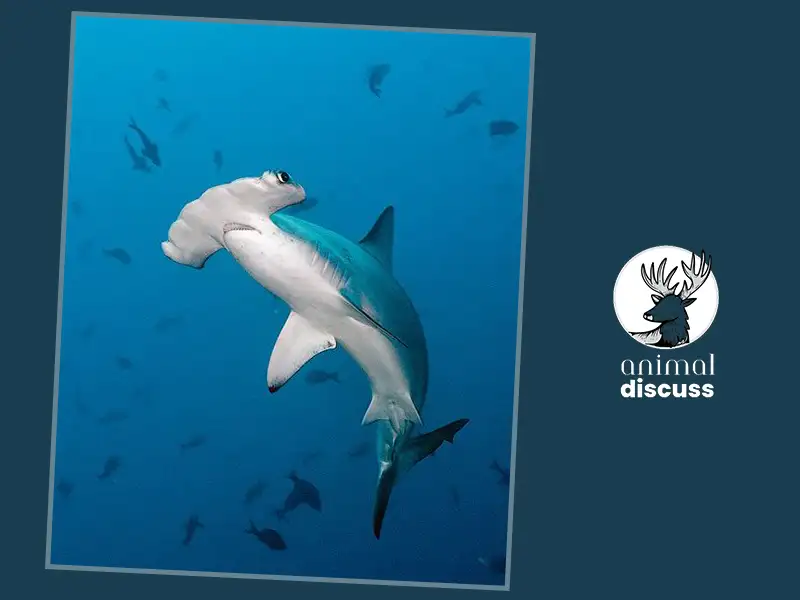
Here, viviparity refers to the fact that hammerhead sharks keep fertilized eggs in their body. Here is a breakdown of the steps:
Step 1: Mating
Mainly, it occurs in calm coastal waters, and it is not uncommon for both sexes to assemble together in large groups when mating season arrives.
However, their mating process is brief but intense. It consists of the male attaching himself to the female and then releasing sperm through specialized organs called claspers. Plus, the female often gets bite marks during this process, which can be quite rough.
Step 2: Having a baby
Moving on, from nine to eleven months following fertilization, the eggs develop within the uterus of the mother. This duration varies among species.
They do not lay eggs, unlike bony fish. Contrarily, a placenta allows the embryos to access the mother’s bloodstream, just like in mammals.
Step 3: Birth of the baby hammerhead shark
Here comes the interesting part which is the birth of a hammerhead shark. Most hammerhead births occur deeper in the spring and summer.
Even larger species, like the great hammerhead, are capable of having numerous pups about 2-42 in between one or two years. But smaller species often have a lower pup production.
One last aspect of their having a child is that hammerhead sharks are infamously uncaring parents compared to other animals. This is why hammerhead sharks are independent from the moment they are born.
Interestingly, the infants are able to swim and hunt the moment they are born since they are fully mature and born alive.
Hammerhead Shark: Underwater Acrobat and Hunter
Yes! You’ve heard it right! Hammerhead sharks can be called underwater acrobats because of their unique swimming strategies.
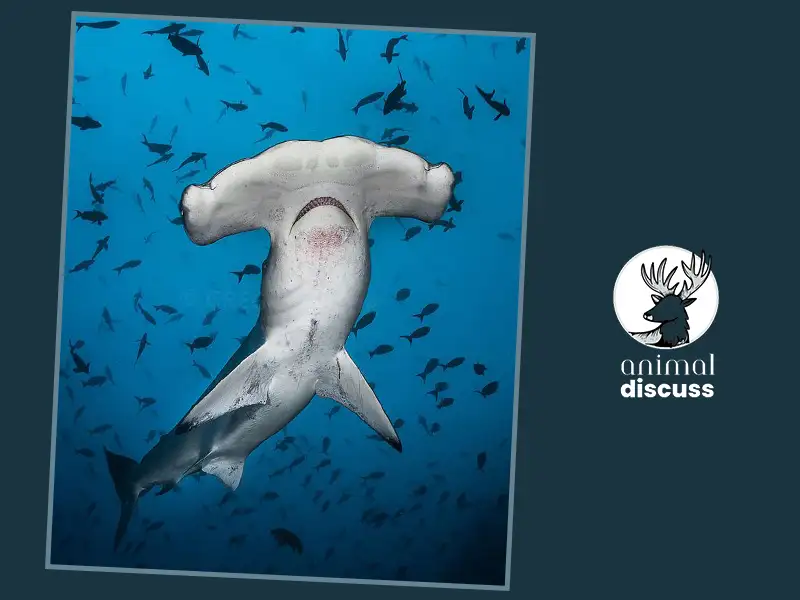
Let’s read them –
#Roll swim – Well, not all hammerhead sharks are able to roll swim but few like great hammerheads and scalloped hammerheads do this. For this, they use their tails, wings, etc.
While swimming, they form an angle, which is about 50 to 75 degrees, and do this roll swimming act. By doing this, they conserve at most 10% of energy.
#Breaching – Hammerheads breach. But why do they do so? The powerful impact of breaching can disperse or impede the movement of prey, such as schools of fish. This is a common occurrence when hammerheads pursue schools of small fish, such as sardines.
Moreover, its enhanced vision through the breach increases the likelihood that it will be able to locate prey hidden below the water’s surface. Crabs and stingrays could be captured using this method.
Plus, breaching has the ability to reveal bottom-dwelling prey, such as mollusks.
So, for this shark, breaching can serve as a means of communication, asserting dominance, courtship, or warding off enemies. Depending on context and nonverbal cues, the breach could signify various things.
Conservation And Threats of Hammerhead Sharks
Beginning with the most notable threat is the brutal practice of shark finning. The entire shark is gutted, and its fins are removed for the purpose of making shark fin soup. Yes, sounds brutal and hence, this act is prohibited.
Besides, hammerhead sharks are trapped in fishing gear meant for other species, a phenomenon known as bycatch. Also, the deterioration of their breeding and feeding grounds caused by coastal development, climate change and pollution contributes to habitat loss.
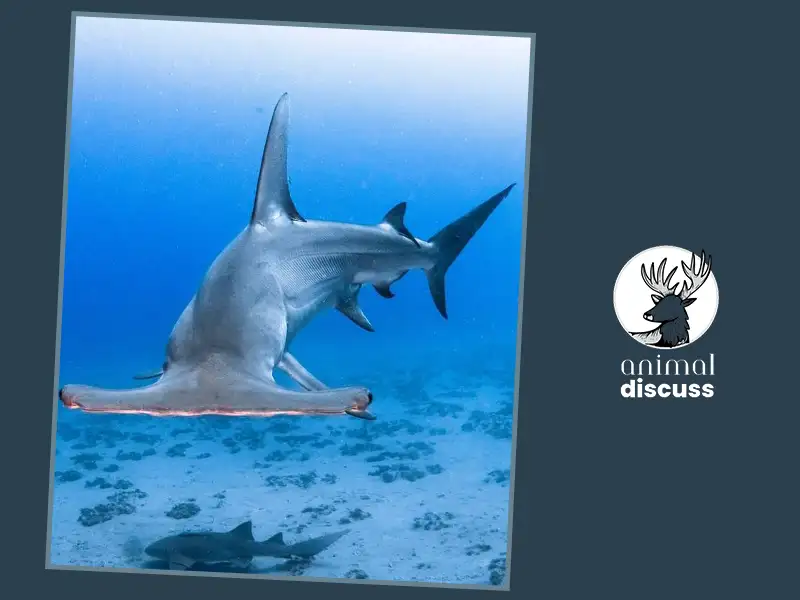
So, according to the IUCN Red List, starting from scalloped hammerheads, great hammerheads are referred to as critically endangered ones.
Moving on to conservation efforts, one set of international regulations governs the trade of endangered species. And among those species are a few
hammerheads. This convention is known as CITES (Convention on International Trade in Endangered Species).
Another effort was made by the establishment of MPAs (Marine protected areas) in strategic locations.
However, most effective conservation can mostly be done by raising public understanding of the hammerhead shark’s significance. People need to know the threats hammerhead sharks face through education and awareness campaigns.
Frequently Asked Questions
Curious to know more about hammerhead sharks? Let’s have a look at some FAQs.
1. At what speed can a hammerhead shark go?
According to reports, it can reach speeds of up to 25 mph when searching for food.
2. The hammerhead’s head is known by what name?
Well, if you have a look at their picture, you can immediately say that their name comes from the peculiar “hammer” or T-shape of their heads.
3. Can hammerhead sharks bite us?
No. The majority of hammerhead species are considered to be harmless to humans due to the small size they have. But very few attacks have been documented by great hammerheads.
Conclusion
Hammerhead sharks are full of diversity. Their 360-degree vision, ability to camouflage, migrating to numerous places and powerful hunting symbolize hammerhead as one of the powerful ferocious animals.
Starting from being 6 meters to having 6th sense, hammerhead shark has it all. You name it, hammerhead sharks have it. However, I have compiled most of the data that a hammerhead comprises. Hope you like it.
References
- https://oceanconservancy.org/wildlife-factsheet/hammerhead-shark/
- https://kids.nationalgeographic.com/animals/fish/facts/hammerhead-shark

